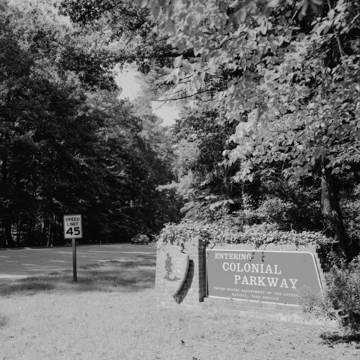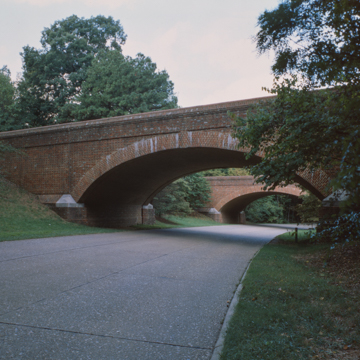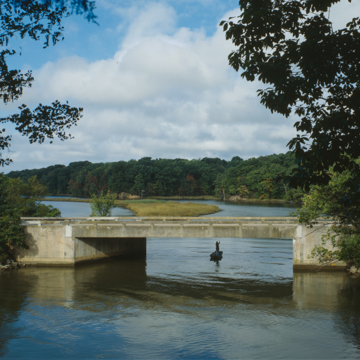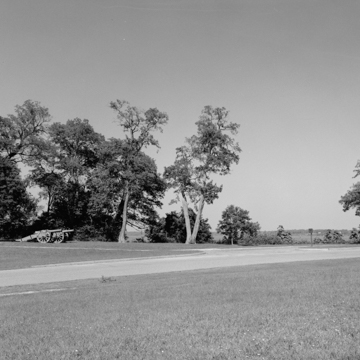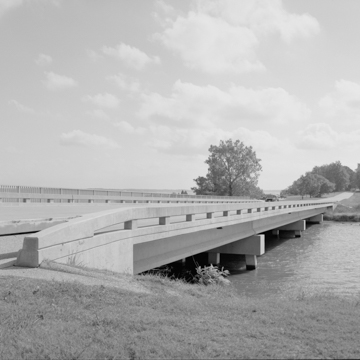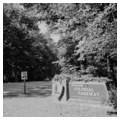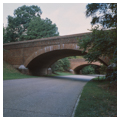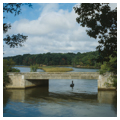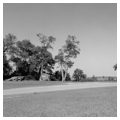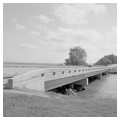This wonderfully scenic thirty-mile drive links the three major colonial sites in Virginia, crossing from the James River to the York River. From open views of the rivers, the carefully maintained parkway passes through a rolling central section, a portion of which lies near various parks and military installations. The idea of such a roadway was initially broached early in the century, but not until 1930 did Congress, under the leadership of Representative Louis C. Cramton of Michigan, bring it into being. Abbott, who had worked on the Blue Ridge Parkway, was largely responsible for the design, which was built in several sections over nearly two decades. The parkway was essential for the success of the Williamsburg restoration, since it was submerged through the town and thus allowed traffic to bypass the historic core.
You are here
Colonial National Historical Parkway
1938–1940, 1955–1957. National Park Service and Bureau of Public Roads staff, Stanley W. Abbott (Jamestown to Yorktown, through Williamsburg)
If SAH Archipedia has been useful to you, please consider supporting it.
SAH Archipedia tells the story of the United States through its buildings, landscapes, and cities. This freely available resource empowers the public with authoritative knowledge that deepens their understanding and appreciation of the built environment. But the Society of Architectural Historians, which created SAH Archipedia with University of Virginia Press, needs your support to maintain the high-caliber research, writing, photography, cartography, editing, design, and programming that make SAH Archipedia a trusted online resource available to all who value the history of place, heritage tourism, and learning.




















